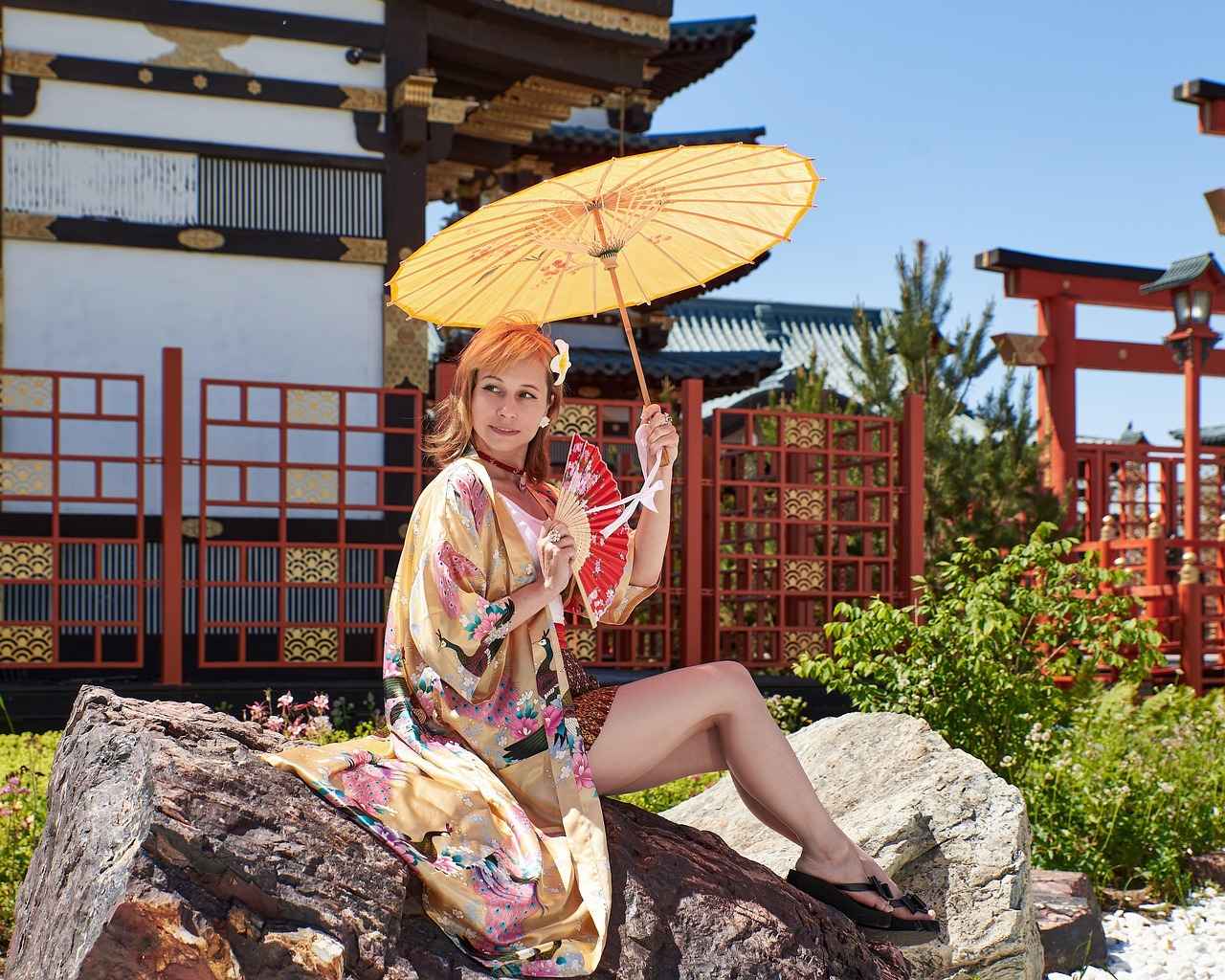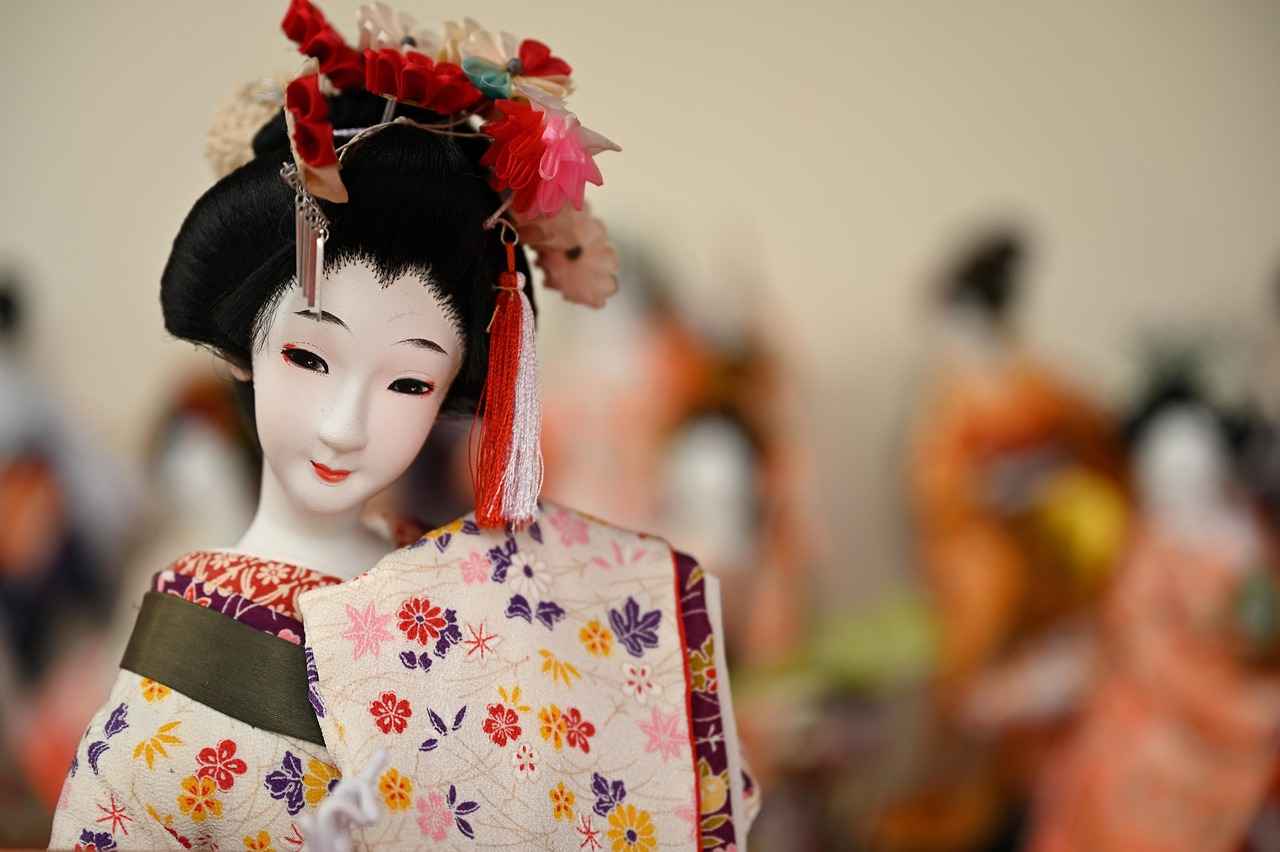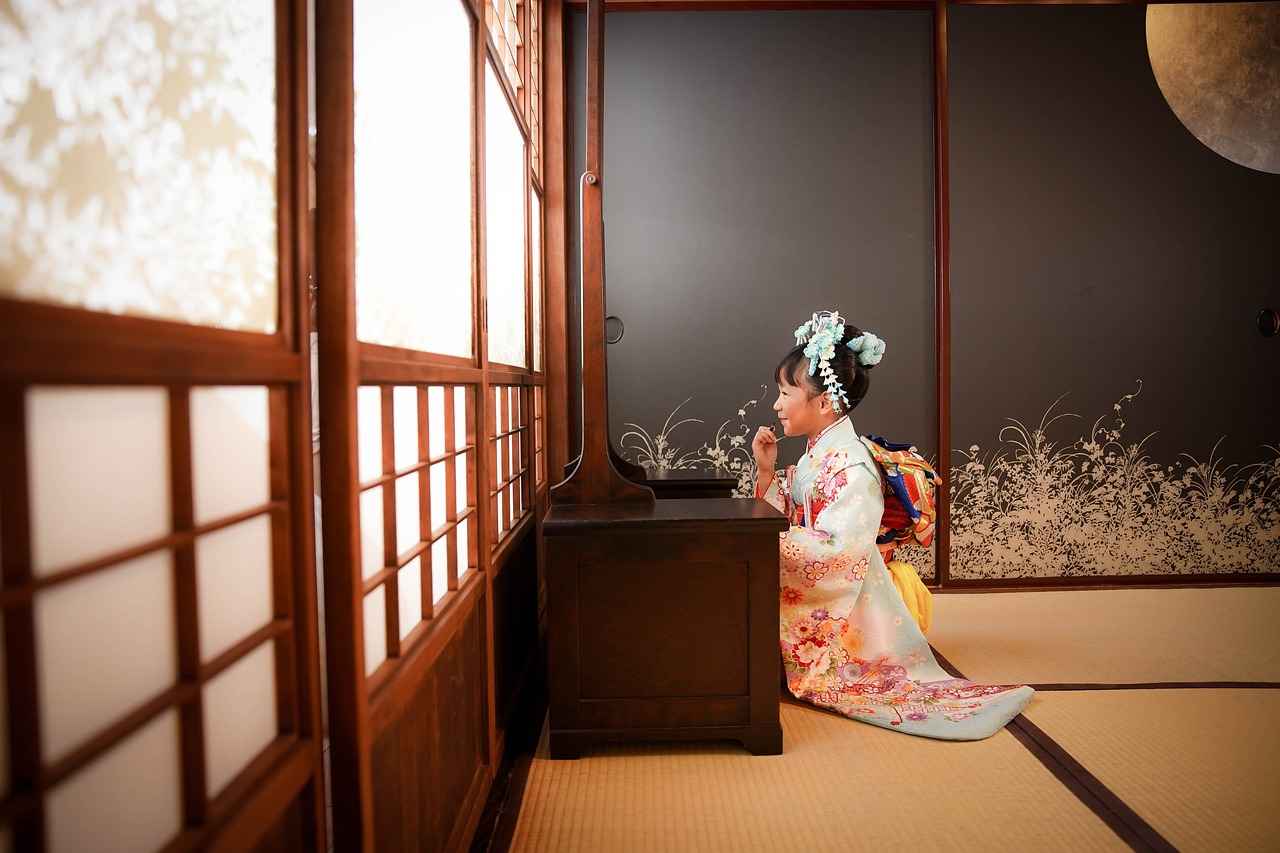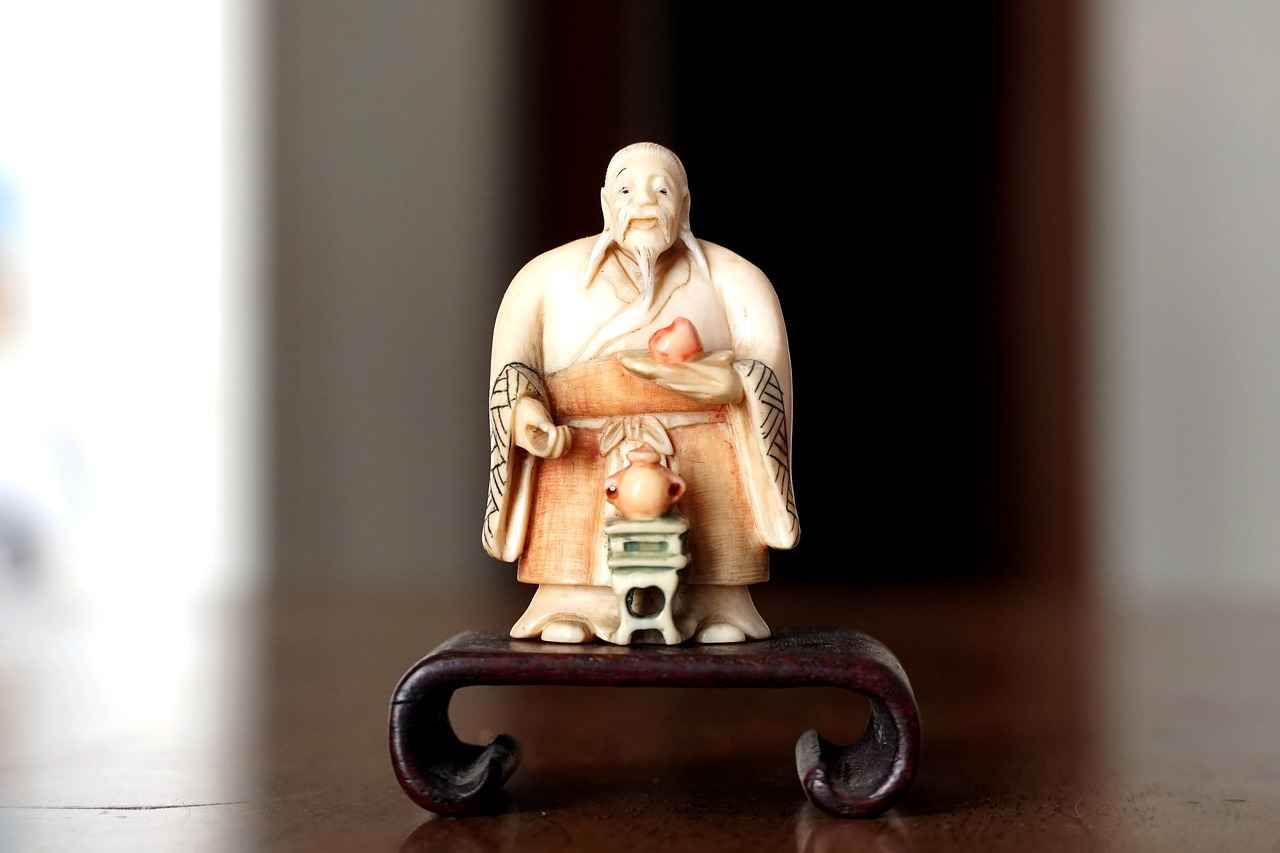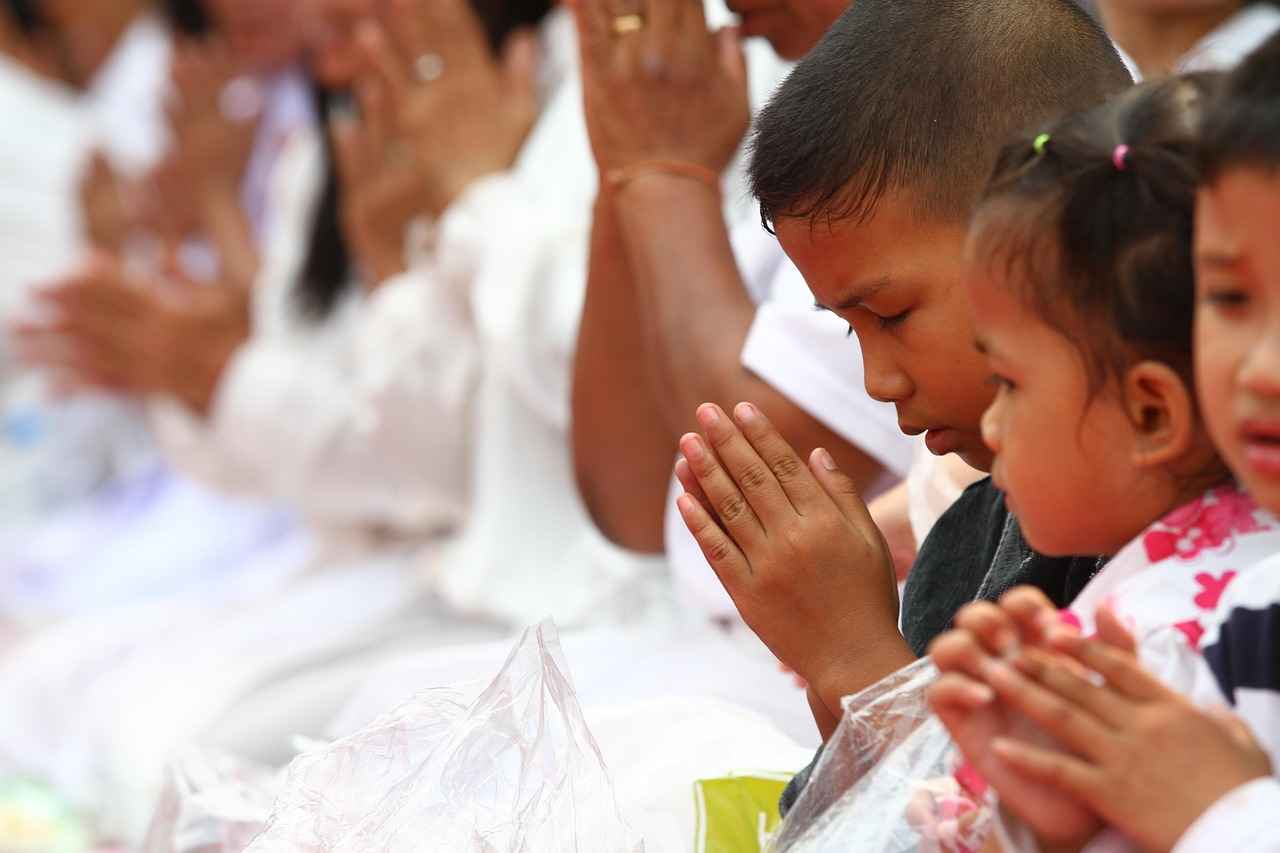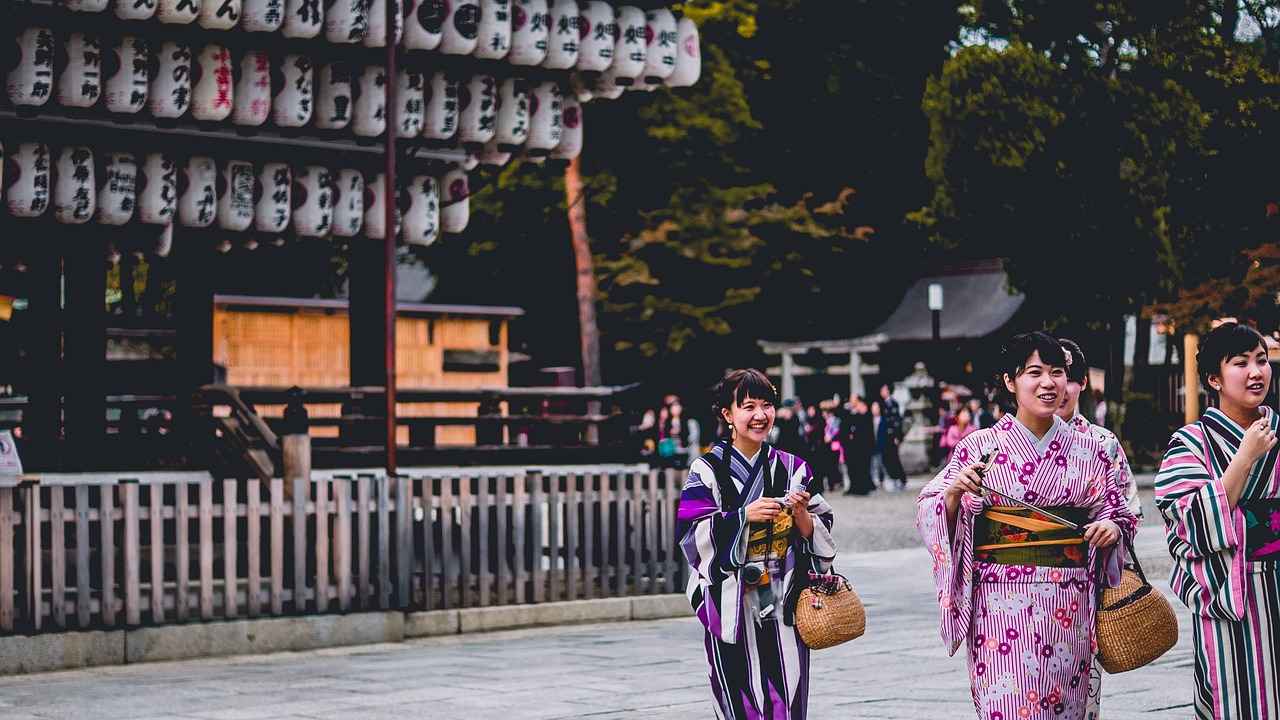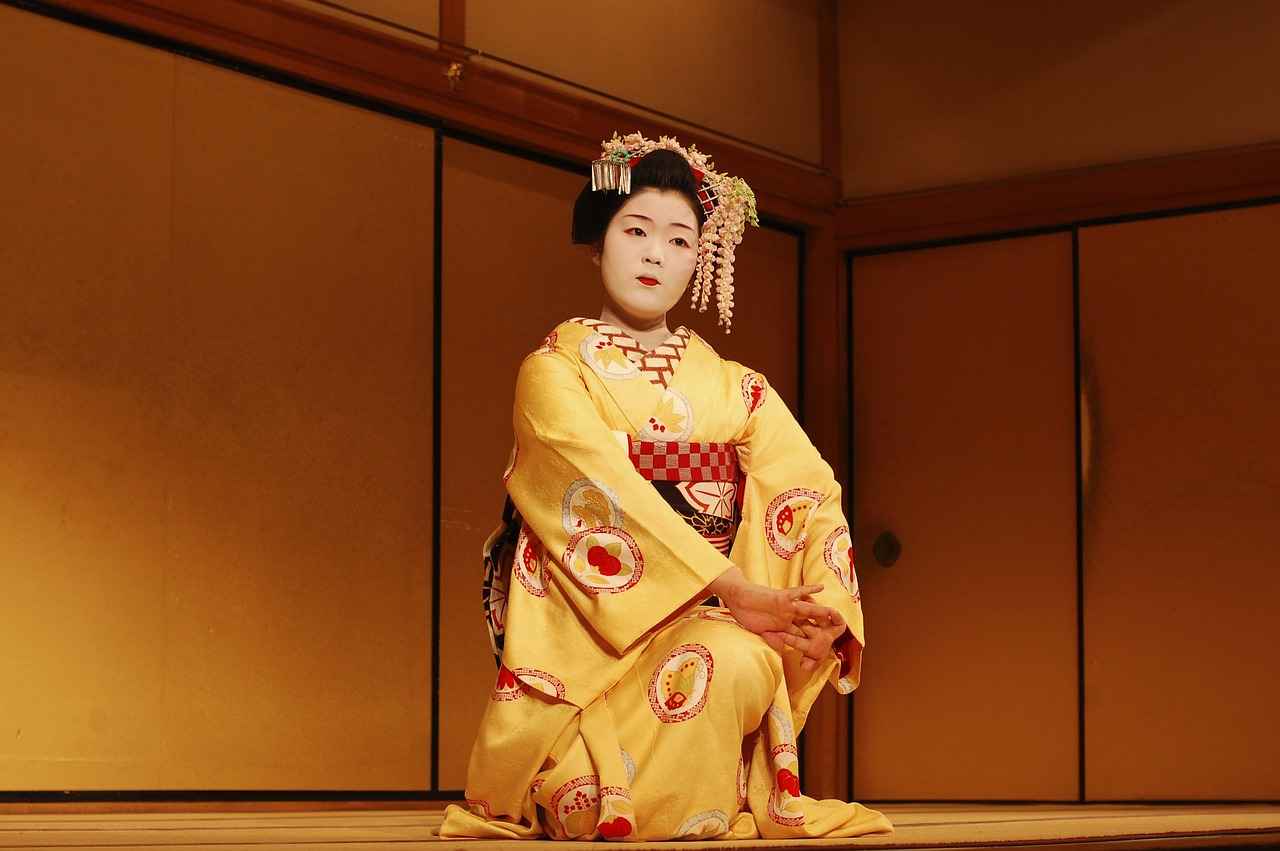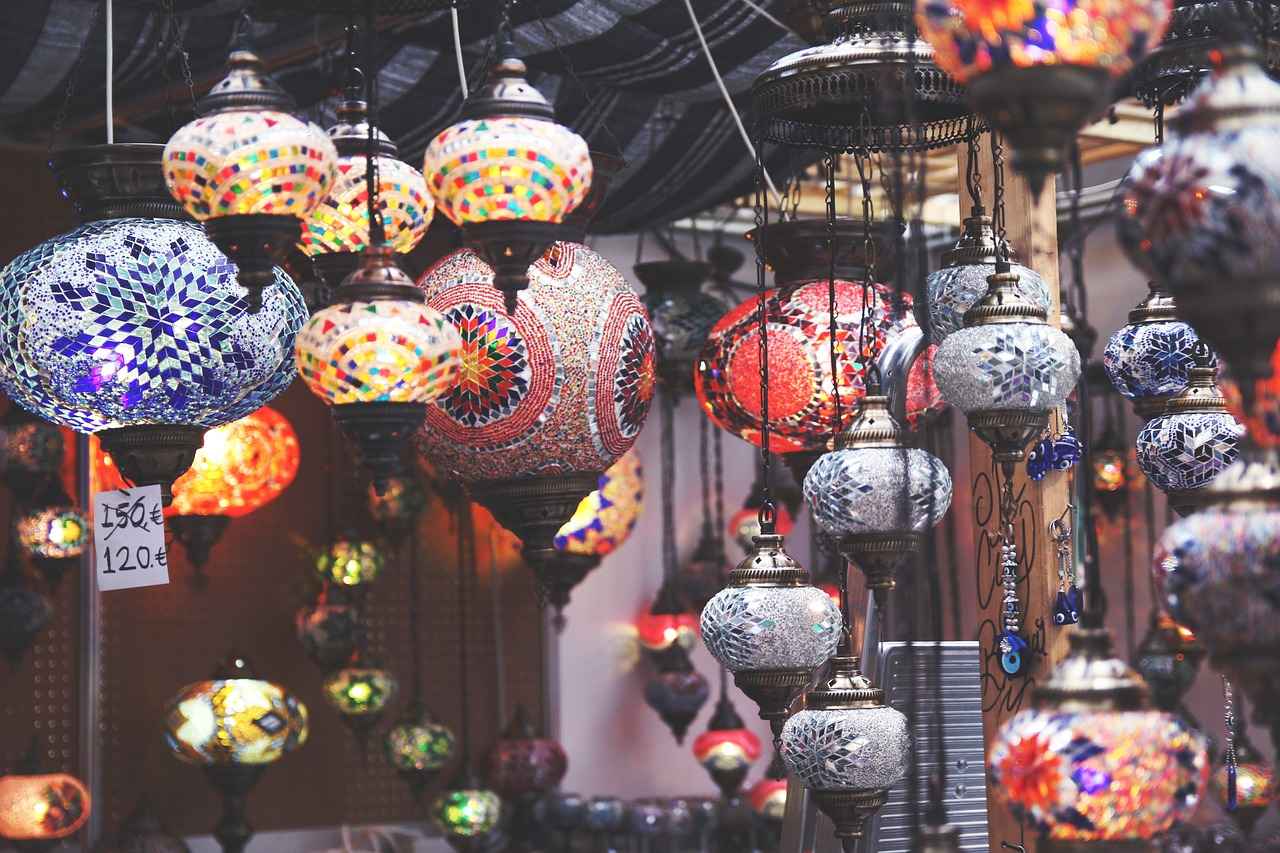This article delves into the enchanting world of kimono fashion in Japan, highlighting its cultural significance, styles, and the artistic expression found within this traditional attire. The kimono is not just a garment; it is a representation of Japan’s rich history and a symbol of its cultural identity.
History of Kimono
The kimono has a rich history that dates back over a thousand years, evolving in style and significance throughout Japan’s cultural periods. Understanding its origins is crucial to appreciating its contemporary forms. Initially, kimonos were simple robes, but over time, they became more elaborate, reflecting the social and political changes in Japan.
Types of Kimonos
- Formal Kimonos: These include the Furisode and Tomesode, worn during significant life events. Their intricate designs signify status and occasion.
- Casual Kimonos: Such as the Yukata, popular during summer festivals, are made of lighter fabric and come in vibrant patterns.
Kimono Fabrics and Patterns
The choice of fabric and pattern in kimonos plays a significant role in their beauty and symbolism. Different materials, such as silk and cotton, contribute to the kimono’s overall aesthetic.
- Silk Kimonos: Known for their luxurious feel, these are often reserved for formal occasions.
- Cotton Kimonos: Ideal for summer, these are lighter and often feature playful patterns.
Wearing a Kimono: Cultural Etiquette
Wearing a kimono involves understanding cultural etiquette and proper techniques. Learning how to properly wear a kimono, including tying the obi sash, is essential for preserving its cultural significance.
The Future of Kimono Fashion
As contemporary fashion evolves, the kimono continues to adapt, blending traditional elements with modern styles. This ensures its relevance in today’s fashion landscape while honoring its cultural roots.
Conclusion
The kimono is a timeless piece of clothing that embodies the spirit of Japan. Its beauty and significance continue to inspire both locals and tourists, making it an essential part of Japan’s cultural heritage.

History of Kimono
The kimono is not just a piece of clothing; it is a symbol of Japan’s rich cultural heritage. Its history spans over a millennium, reflecting the evolution of Japanese society through various historical periods. Initially, the kimono emerged during the Heian period (794-1185), characterized by its simple, straight lines and lack of elaborate designs. As time progressed, the garment underwent significant transformations, mirroring changes in fashion, social structures, and cultural practices.
During the Muromachi period (1336-1573), the kimono began to adopt more complex designs, with the introduction of vibrant colors and intricate patterns. This era was marked by the rise of the samurai class, which influenced the style and materials used in kimono production. The Edo period (1603-1868) saw the kimono reach its peak in terms of variety and artistic expression, with distinct styles emerging for different social classes and occasions.
Understanding the origins of the kimono is crucial for appreciating its contemporary forms. Today, the kimono is often associated with formal occasions, such as weddings and festivals, yet it also finds its place in modern fashion. Designers are continually reinterpreting this traditional attire, blending it with contemporary styles to create innovative looks that resonate with younger generations.
Furthermore, the significance of the kimono extends beyond mere aesthetics. Each garment tells a story, representing the wearer’s status, age, and even personality through its colors and patterns. For instance, the Furisode, worn by young unmarried women, features long sleeves and vibrant designs, symbolizing youth and vitality. In contrast, the Tomesode is a more subdued kimono worn by married women, reflecting maturity and elegance.
In conclusion, the kimono is a living testament to Japan’s history and culture. Its evolution from a simple garment to a complex symbol of identity illustrates the dynamic nature of Japanese society. By exploring its rich history, we can better appreciate the artistry and significance of this traditional attire in today’s world.
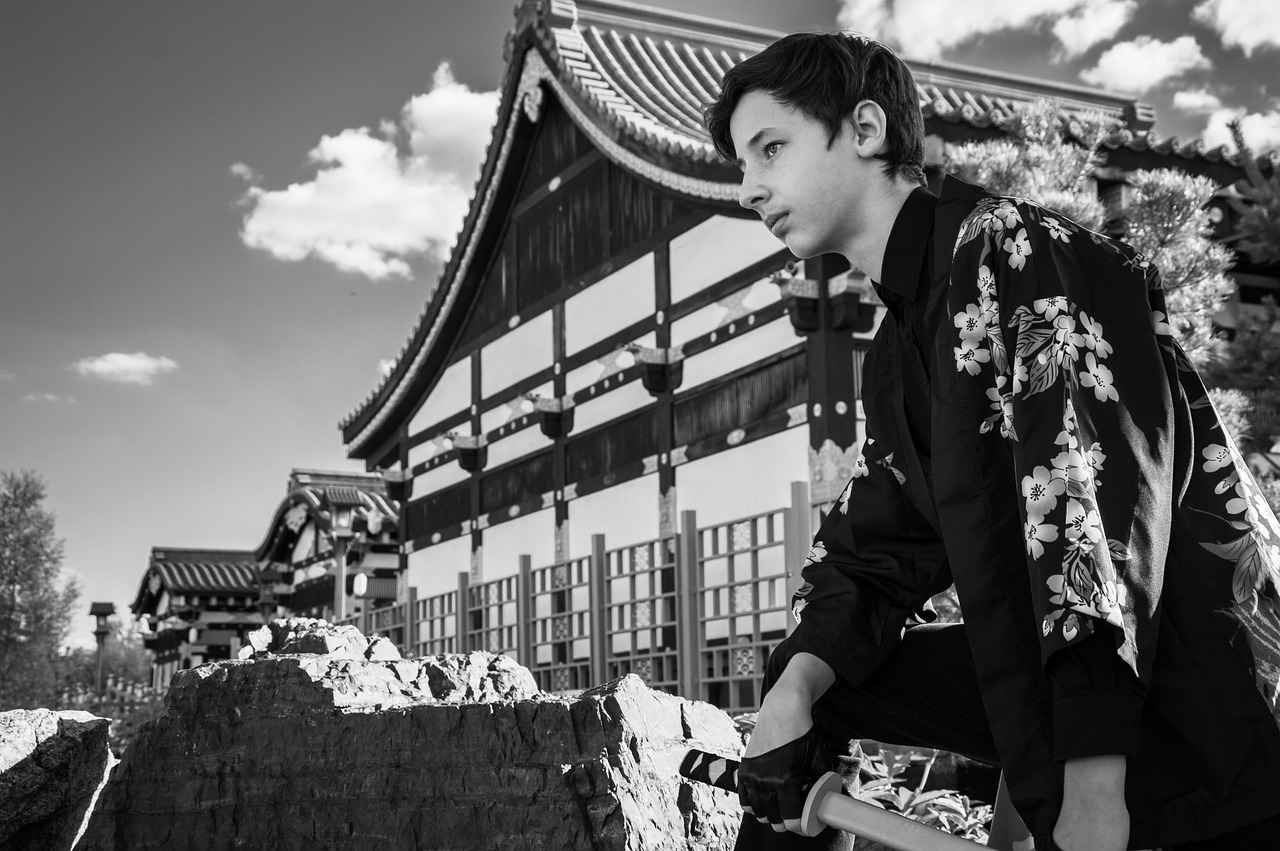
Types of Kimonos
The world of kimonos is as diverse as the culture it represents. Each type of kimono is designed for specific occasions, embodying various meanings and styles that reflect Japan’s rich heritage. Understanding these distinctions can enhance appreciation for this traditional attire.
- Formal Kimonos: These are worn during significant events such as weddings, tea ceremonies, and other formal gatherings. They often feature intricate designs and vibrant colors that indicate the wearer’s status and occasion.
- Furisode: This kimono is characterized by its long sleeves and is traditionally worn by young, unmarried women. The Furisode symbolizes youth and elegance, making it a popular choice for celebrations and ceremonies.
- Tomesode: Typically worn by married women, the Tomesode has a more subdued design, often with motifs that signify maturity and sophistication. It is commonly worn at formal events.
- Casual Kimonos: These include styles like the Yukata, which is lightweight and made from cotton. Yukatas are often worn during summer festivals and casual outings, featuring vibrant colors and playful patterns that reflect seasonal themes.
- Hifu: A type of kimono worn in colder weather, the Hifu is often lined and made from heavier fabrics, providing warmth while maintaining traditional aesthetics.
- Jinbei: Often worn by men and boys, Jinbei consists of a top and shorts made from lightweight fabric, ideal for summer wear and casual settings.
Each type of kimono not only serves a practical purpose but also carries deep cultural significance, showcasing the artistry and craftsmanship of Japanese textile traditions. Understanding these types allows one to appreciate the beauty and meaning behind each garment.
Conclusion: The variety of kimonos reflects the richness of Japanese culture and the importance of tradition in contemporary society. Whether for formal events or casual outings, each kimono tells a story, making them a vital part of Japan’s heritage.
Formal Kimonos
hold a prestigious place in Japanese culture, particularly during significant life events such as weddings, graduations, and other ceremonial occasions. Among the various types of formal kimonos, the Furisode and Tomesode stand out due to their intricate designs and rich symbolism.
The Furisode, characterized by its long, flowing sleeves, is traditionally worn by young, unmarried women. This kimono is often adorned with vibrant colors and elaborate patterns, representing youth and elegance. It is commonly seen at celebrations such as coming-of-age ceremonies and weddings, where the wearer aims to make a striking impression.
In contrast, the Tomesode is typically worn by married women and features a more subdued design, often in darker shades. The elegance of the Tomesode lies in its simplicity, with subtle patterns that convey maturity and sophistication. This kimono is frequently worn at formal gatherings, showcasing the wearer’s status and grace.
| Type of Kimono | Worn By | Occasions |
|---|---|---|
| Furisode | Young unmarried women | Weddings, coming-of-age ceremonies |
| Tomesode | Married women | Formal events, family gatherings |
The cultural significance of these kimonos is immense. They not only represent the wearer’s personal status but also embody the rich traditions of Japanese society. The intricate designs and vibrant colors used in these garments are often inspired by nature, mythology, and seasonal themes, making each piece a unique work of art.
In conclusion, formal kimonos like the Furisode and Tomesode are more than just clothing; they are a reflection of Japanese heritage and artistry. Their distinct styles and meanings continue to captivate and inspire, ensuring that these beautiful garments remain an integral part of Japan’s cultural landscape.
Furisode: The Youthful Kimono
The Magic of Kimono Forest: Exploring Japan’s Traditional FashionThis article delves into the enchanting world of kimono fashion in Japan, highlighting its cultural significance, styles, and the artistic expression found within this traditional attire.
The Furisode is not just a garment; it embodies the spirit of youth and elegance in Japanese culture. Characterized by its long, flowing sleeves, this kimono is traditionally worn by young unmarried women during significant ceremonies, such as weddings and coming-of-age celebrations. The design and color of the Furisode often reflect the wearer’s personality and the joyous occasion.
The vibrant colors and intricate patterns of the Furisode are essential in conveying the symbolism of youth and the transition into adulthood. Each Furisode is typically adorned with elaborate motifs that can represent various themes, such as nature, seasons, or auspicious symbols, thus enhancing its aesthetic appeal and cultural significance.
- Symbolism: The long sleeves of the Furisode are said to signify grace and beauty, allowing for a dramatic display as the wearer moves.
- Occasions: Commonly worn during Shichi-Go-San (a festival for children), graduation ceremonies, and other milestone events, the Furisode plays a crucial role in marking significant life moments.
- Fashion Evolution: While the traditional Furisode remains a staple, modern interpretations have emerged, incorporating contemporary designs and fabrics, appealing to younger generations.
As the Furisode continues to be celebrated in Japan, it serves as a reminder of the rich cultural heritage and the importance of honoring traditions while embracing change. Whether worn at a formal event or displayed as a piece of art, the Furisode remains a timeless symbol of beauty and youth in Japanese society.
Tomesode: The Married Woman’s Kimono
The Tomesode is a traditional Japanese kimono that holds a significant place in the cultural attire of married women. Unlike its more vibrant counterpart, the Furisode, which is worn by young unmarried women, the Tomesode is characterized by its subdued designs and elegant simplicity. This garment is typically donned during formal occasions, such as weddings and ceremonial events, emphasizing the maturity and sophistication of the wearer.
Traditionally, the Tomesode is made from high-quality fabrics, often silk, which adds to its luxurious appearance. The colors of the Tomesode can vary, but they are generally darker and more muted, symbolizing the transition into married life. The designs are often adorned with subtle patterns and motifs that reflect nature, seasons, or auspicious symbols, showcasing the wearer’s refined taste.
One of the defining features of the Tomesode is its short sleeves, which further distinguishes it from other kimonos. This style not only signifies the wearer’s marital status but also conveys a sense of elegance and grace. When paired with an obi (a wide belt), the Tomesode creates a harmonious silhouette that enhances the overall aesthetic of the outfit.
Moreover, the Tomesode is often worn during significant life events, such as family gatherings, ceremonies, and festivals. Wearing this kimono not only reflects personal style but also honors cultural traditions, making it a cherished garment among married women in Japan.
In conclusion, the Tomesode stands as a testament to the beauty and intricacy of Japanese kimono fashion. Its understated elegance and rich cultural significance make it a beloved choice for formal occasions, allowing married women to express their maturity and sophistication through this timeless attire.
Casual Kimonos
, particularly the Yukata, hold a special place in Japanese culture, especially during the vibrant summer months. These garments are not only a nod to tradition but also a celebration of comfort and style, making them a popular choice for various occasions.
The Yukata is a lightweight cotton kimono that is often worn at summer festivals, known as matsuri, and casual outings. Its breathable fabric allows for ease of movement, which is essential during the warm weather. The vibrant colors and intricate patterns of the Yukata often reflect seasonal themes, with designs ranging from floral motifs to geometric shapes, making each piece unique and visually appealing.
During summer festivals, wearing a Yukata is a cherished tradition. People of all ages don these beautiful garments to enjoy fireworks displays, traditional games, and food stalls. The Yukata not only enhances the festive atmosphere but also connects wearers to their cultural heritage. Men’s Yukatas tend to have more subdued colors and simpler patterns, while women’s Yukatas often showcase a broader spectrum of colors and intricate designs, emphasizing femininity and grace.
Beyond festivals, casual kimonos like the Yukata can also be worn in everyday settings. Their versatility allows them to be dressed up with accessories or kept simple for a relaxed look. Pairing a Yukata with a haneri (a decorative collar) or a stylish obi (sash) can elevate the outfit for gatherings or casual dates.
In conclusion, casual kimonos such as the Yukata are more than just clothing; they are a celebration of Japanese culture, comfort, and style. Their vibrant patterns and lightweight fabric make them perfect for summer festivities and everyday wear, allowing individuals to express their cultural identity while enjoying the warmth of the season.
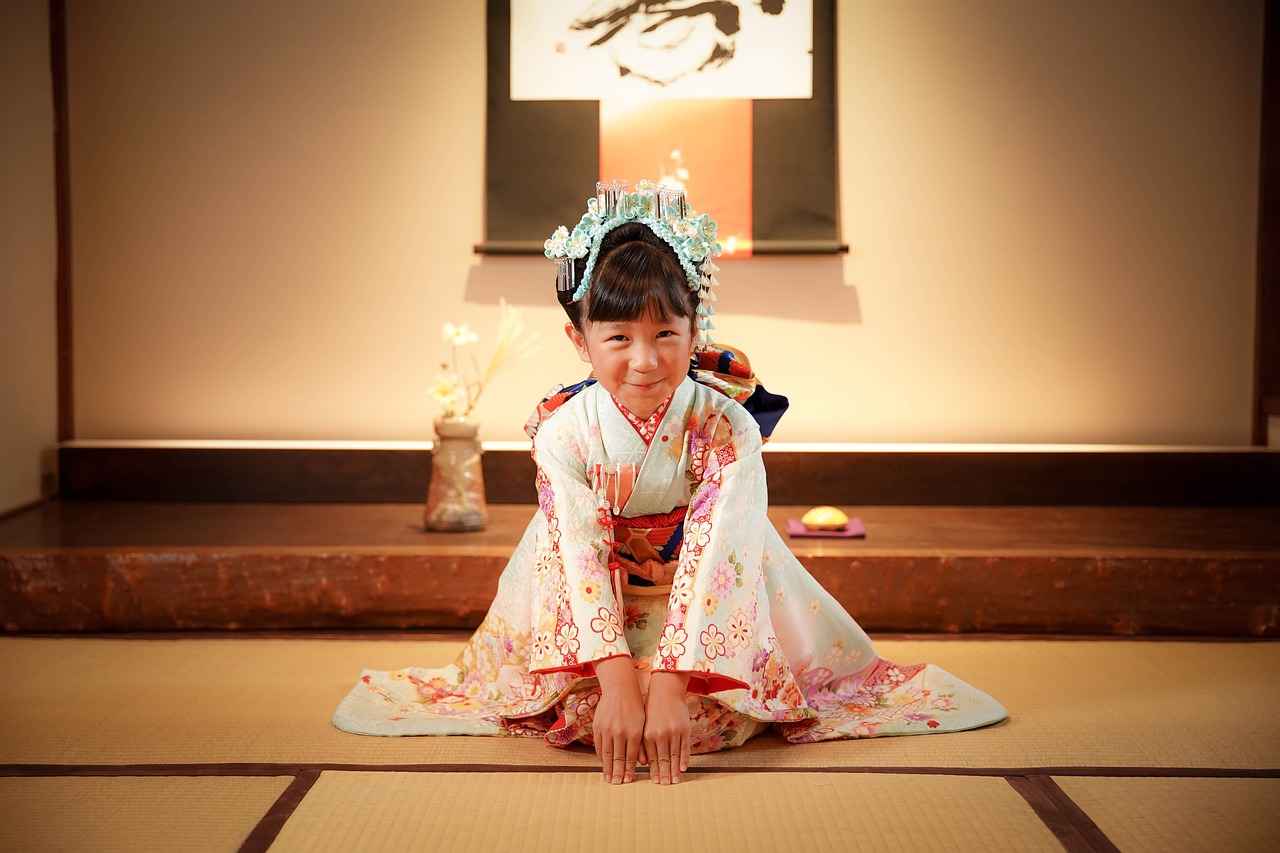
Kimono Fabrics and Patterns
The choice of fabric and pattern in kimonos plays a significant role in their beauty and symbolism. Each fabric type not only affects the kimono’s visual appeal but also its cultural significance and the context in which it is worn.
Traditionally, silk is the most prestigious fabric used in kimono making. Its luxurious texture and sheen make it ideal for formal occasions. Silk kimonos often feature intricate designs, including embroidery and hand-painted motifs, which can signify various cultural meanings. For instance, a kimono adorned with cranes represents longevity and good fortune, while those with floral patterns may symbolize the beauty of nature and the changing seasons.
In contrast, cotton kimonos, such as the Yukata, are designed for casual wear and are especially popular during summer festivals. The lightweight and breathable nature of cotton makes it comfortable for warmer weather. Yukatas often showcase vibrant colors and playful patterns, reflecting seasonal themes and festivities. Common motifs include cherry blossoms, waves, and geometric shapes, each carrying its own cultural significance.
Moreover, other materials like ramie and linen are also used, especially for more casual or summer garments. These fabrics are valued for their durability and are often chosen for their ability to keep the wearer cool. Kimonos made from these materials tend to feature simpler patterns, allowing for ease of movement and comfort.
Ultimately, the choice of fabric and pattern in kimonos is not merely a matter of aesthetics; it is deeply intertwined with Japanese culture and tradition. Each garment tells a story, reflecting the wearer’s personality, the occasion, and the rich heritage of Japan.
Silk Kimonos
hold a special place in the heart of Japanese fashion, celebrated for their luxurious texture and exquisite craftsmanship. These garments are not merely clothing; they are a reflection of Japan’s rich cultural heritage and artistry. Traditionally, silk kimonos are worn during significant events such as weddings, tea ceremonies, and other formal gatherings, where their beauty and elegance truly shine.
The intricate designs found on silk kimonos often showcase elaborate embroidery and sophisticated dyeing techniques, which can take artisans months to complete. Each piece tells a story, often inspired by nature, mythology, or seasonal themes, making them unique works of art. The use of silk as a fabric adds to the overall opulence, as its smooth surface and vibrant colors enhance the visual impact of the designs.
In addition to their aesthetic appeal, silk kimonos carry significant cultural symbolism. For instance, the colors and patterns chosen for a kimono can indicate the wearer’s age, marital status, and even the season. This intricate relationship between the garment and its meaning underscores the importance of kimonos in Japanese society.
Moreover, the process of wearing a silk kimono is an art in itself. It involves multiple layers and precise techniques, including the tying of the obi, a decorative sash that completes the look. Understanding the etiquette surrounding kimono wearing is essential for anyone who wishes to appreciate this traditional attire fully.
As fashion evolves, silk kimonos continue to inspire contemporary designers, blending traditional motifs with modern styles. This fusion not only keeps the kimono relevant but also allows for personal expression within the framework of a time-honored garment.
In conclusion, silk kimonos are more than just beautiful clothing; they are a testament to Japan’s rich cultural history and artistic expression. Their luxurious feel and intricate designs make them a cherished part of formal occasions, ensuring that the art of kimono wearing remains alive and celebrated for generations to come.
Cotton Kimonos
, particularly the Yukata, are a quintessential part of Japanese summer fashion. Their lightweight and breathable fabric makes them an excellent choice for the warmer months, allowing for comfort and ease of movement. This traditional garment not only serves a practical purpose but also embodies the vibrant spirit of summer in Japan.
Typically made from 100% cotton, Yukatas are designed to be worn casually, making them perfect for summer festivals and outdoor events. They often feature vivid colors and playful patterns that reflect the beauty of the season, such as floral motifs and scenic landscapes. This artistic expression through fabric and design showcases the rich cultural heritage of Japan, making each Yukata a unique piece of wearable art.
During summer festivals, it is common to see people of all ages donning Yukatas, enhancing the festive atmosphere. The lightweight nature of cotton ensures that wearers stay cool, while the variety of styles available allows for personal expression. From traditional patterns to modern interpretations, cotton kimonos cater to diverse tastes, making them a staple in contemporary wardrobes.
Moreover, Yukatas are often accessorized with obi sashes and other traditional items, adding elegance to the overall look. This not only highlights the beauty of the garment but also reinforces the importance of cultural traditions in modern fashion. As such, cotton kimonos serve as a bridge between the past and present, allowing individuals to connect with their heritage while enjoying the comfort and style they offer.
In conclusion, cotton kimonos like the Yukata are more than just summer attire; they are a celebration of Japanese culture and artistry. Their breathable fabric, vibrant designs, and rich history make them an essential part of Japan’s seasonal festivities and a beloved choice for many.
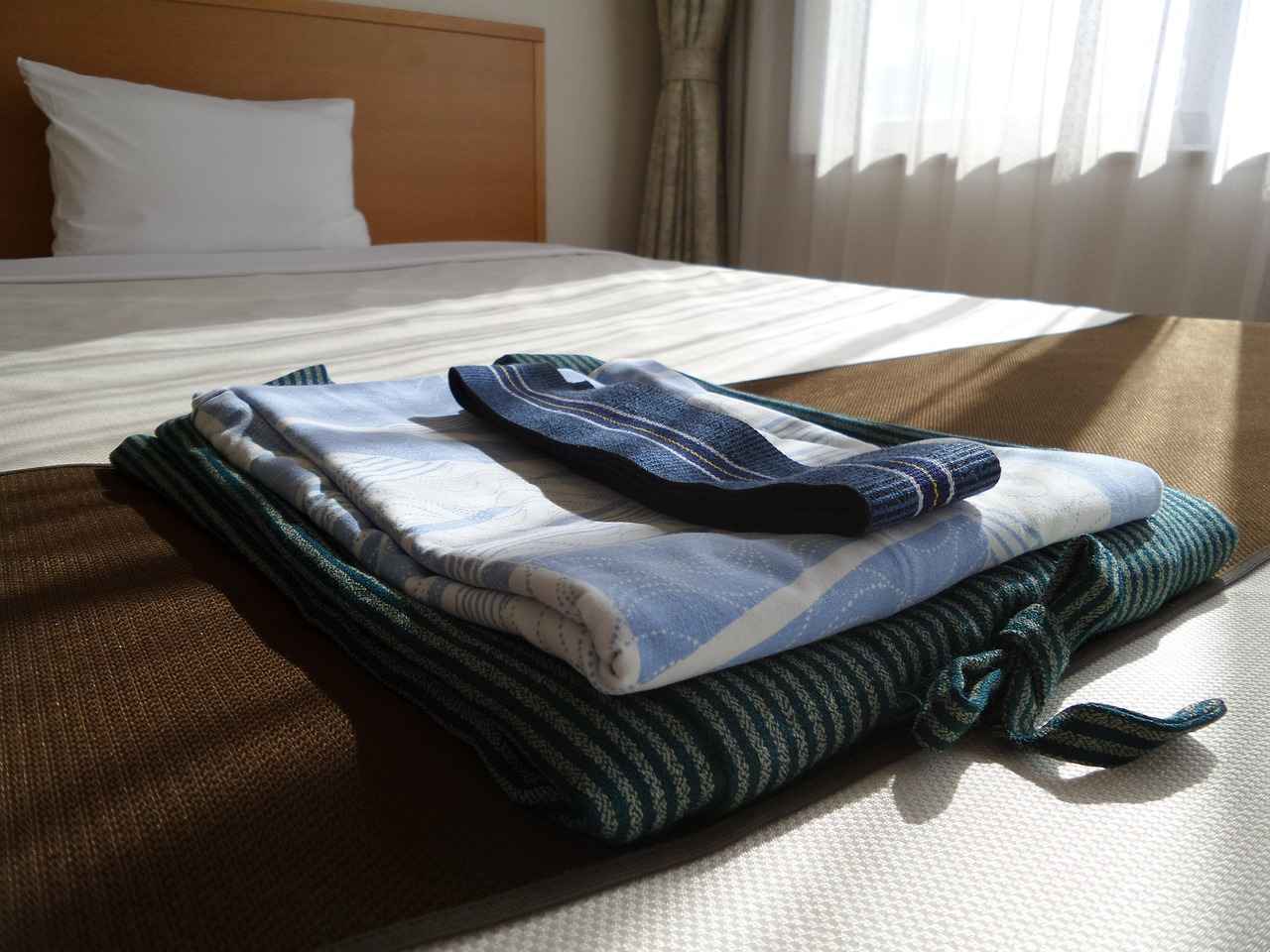
Wearing a Kimono: Cultural Etiquette
Wearing a kimono is a beautiful and intricate process that goes beyond simply putting on a garment. It embodies a deep respect for Japanese culture and tradition. To truly honor this traditional attire, one must understand the cultural etiquette and the proper techniques involved in donning a kimono.
The first step in wearing a kimono is understanding its significance. Each kimono is not just a piece of clothing; it tells a story through its fabric, colors, and patterns. Choosing the right kimono for the occasion is essential, as different styles represent various meanings and social contexts. For example, a formal kimono is typically reserved for weddings and ceremonial events, while a casual yukata is perfect for summer festivals.
Once you have selected the appropriate kimono, the next step is to learn the proper techniques for wearing it. This includes understanding how to layer the garment correctly and how to tie the obi sash. The obi is a crucial component of the kimono, and its style can vary greatly depending on the formality of the occasion. A well-tied obi not only enhances the overall look but also shows respect for the tradition.
In addition to the physical aspects of wearing a kimono, there are also social etiquettes to consider. When wearing a kimono, it is important to move gracefully and be aware of your surroundings. For instance, when sitting, one should sit with their legs tucked to the side to maintain the garment’s elegance. Additionally, understanding the appropriate times to wear a kimono and the cultural practices associated with it is vital.
In conclusion, wearing a kimono is a multifaceted experience that requires knowledge of both the cultural etiquette and proper techniques. By embracing these elements, individuals can truly appreciate and honor the beauty of this traditional attire, ensuring that the kimono remains a cherished part of Japanese culture for generations to come.
How to Properly Wear a Kimono
Wearing a kimono is a beautiful and intricate process that reflects Japan’s rich cultural heritage. Understanding the correct way to don this traditional garment is not only essential for aesthetic appeal but also for honoring its cultural significance. Here, we will explore the steps to properly wear a kimono, ensuring that you appreciate its beauty while respecting the traditions behind it.
- Choosing the Right Kimono: Select a kimono that suits the occasion. Formal events call for more elaborate designs, while casual outings may permit lighter fabrics like Yukata.
- Undergarments: Before putting on the kimono, wear appropriate undergarments. A haneri (collar) and juban (undergarment) are typically worn beneath the kimono to protect it and enhance comfort.
- Putting on the Kimono: Start by wrapping the kimono around your body, ensuring that the left side overlaps the right. This is crucial as the opposite is reserved for dressing the deceased.
- Tying the Obi: The obi sash is a key element in kimono wearing. Wrap it around your waist, ensuring it is snug but not too tight. The obi can be tied in various styles, with the most common being the taiko knot, which resembles a drum.
- Layering: Depending on the season and occasion, you may need to layer your kimono with additional garments, such as a hifu (jacket) or obijime (decorative cord) to enhance the overall look.
- Final Adjustments: Ensure that the kimono is properly adjusted for comfort and aesthetics. The sleeves should fall gracefully, and the hem should touch the floor when you are standing.
By following these steps, you can wear a kimono with confidence and grace, preserving its cultural significance while enjoying its aesthetic beauty. Remember, the kimono is more than just clothing; it is a symbol of Japan’s rich history and artistry.
Kimono Etiquette in Social Settings
Wearing a kimono is not just about the beauty of the garment; it is also deeply rooted in Japanese culture and tradition. Understanding the etiquette associated with wearing a kimono in social settings is essential for showing respect for these traditions and enhancing the overall experience of donning this iconic attire.
When attending events where kimonos are worn, it is important to consider the following etiquette:
- Choosing the Right Kimono: Select a kimono that is appropriate for the occasion. Formal events may require a Furisode or Tomesode, while casual gatherings may be suitable for a Yukata.
- Proper Fit and Style: Ensure that the kimono fits well and is styled correctly. A well-fitted kimono enhances your appearance and shows respect for the garment.
- Layering and Accessories: Pay attention to how the layers are arranged and how the obi sash is tied. The obi should be neatly tied at the back, and accessories should complement rather than overpower the kimono.
- Walking Gracefully: When wearing a kimono, it is important to walk gracefully. Take smaller steps and maintain a poised posture to reflect the elegance of the attire.
- Respecting Cultural Norms: Be mindful of cultural norms and behaviors when interacting with others. Bowing and polite conversation are key aspects of Japanese etiquette.
By adhering to these guidelines, individuals can fully appreciate the significance of the kimono and participate in social events with confidence. This understanding not only enriches the experience of wearing the kimono but also fosters a deeper connection to Japanese heritage.
In conclusion, the etiquette surrounding kimono-wearing is a vital aspect of engaging with this beautiful tradition. Embracing these practices ensures that wearers honor the cultural significance of the kimono while enjoying its aesthetic appeal.
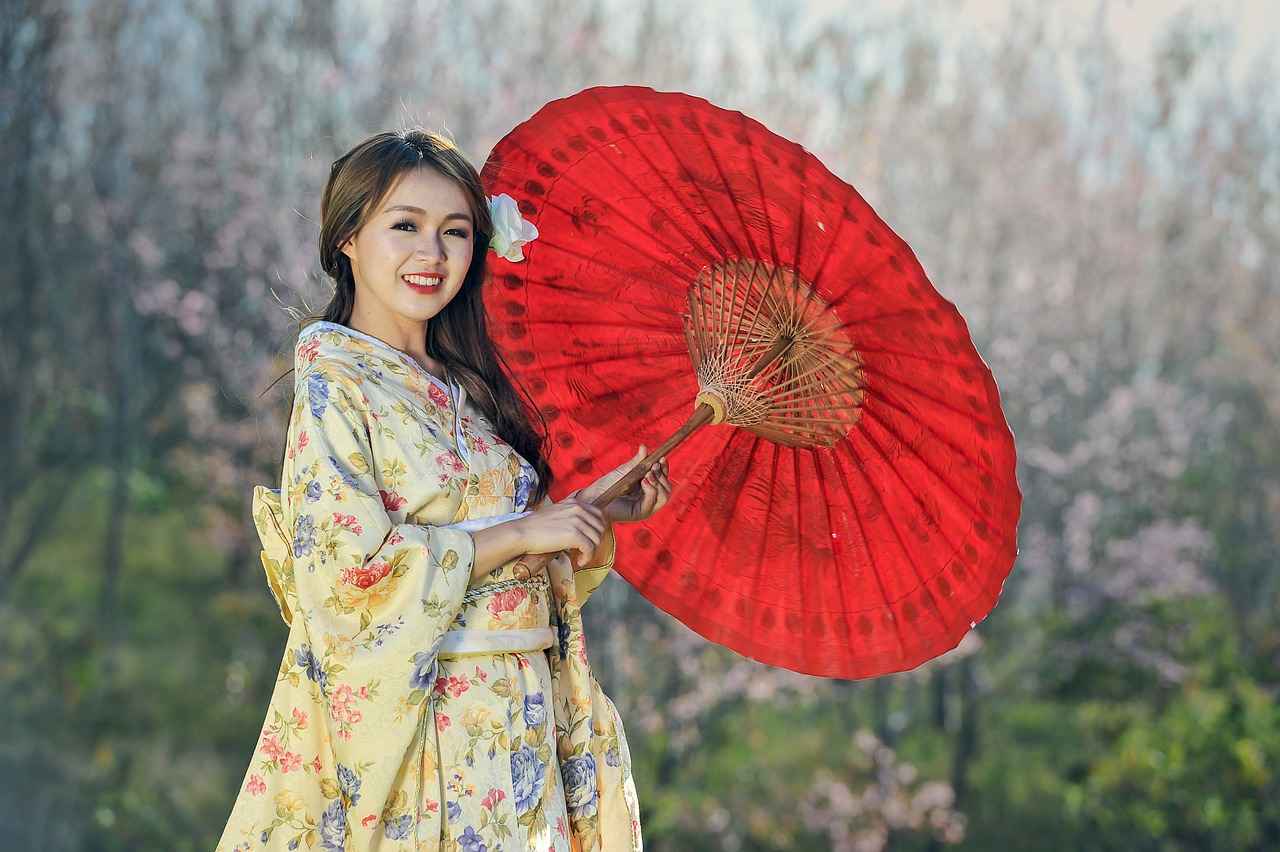
The Future of Kimono Fashion
As we navigate through the ever-evolving landscape of contemporary fashion, the kimono remains a captivating symbol of tradition that continues to adapt and thrive. This remarkable garment, deeply rooted in Japanese culture, is experiencing a renaissance as it seamlessly blends traditional elements with modern styles. This fusion not only preserves the kimono’s cultural significance but also ensures its relevance in today’s fashion scene.
The kimono’s adaptability is evident in its varied styles and fabrics that cater to diverse tastes and occasions. Designers are increasingly experimenting with innovative cuts, colors, and materials, resulting in a fresh take on this classic attire. For instance, the introduction of streetwear-inspired kimonos showcases how the garment can be incorporated into everyday outfits, appealing to a younger audience.
Furthermore, sustainability has become a crucial aspect of modern fashion, and the kimono is no exception. Many designers are now focusing on eco-friendly materials and ethical production methods, reflecting a growing awareness of environmental impact. This shift not only honors the cultural roots of the kimono but also aligns with global trends towards sustainability.
As we look to the future, the kimono is poised to remain a timeless piece that transcends generations. Fashion shows and cultural festivals are increasingly showcasing innovative kimono designs that celebrate both heritage and modernity. This ongoing evolution ensures that the kimono will continue to be a beloved and respected garment in the fashion world.
In conclusion, the future of kimono fashion is bright and promising. By embracing change while honoring its rich history, the kimono not only retains its cultural essence but also captivates new audiences worldwide. As it adapts to contemporary trends, the kimono stands as a testament to the beauty of tradition meeting modernity.
Frequently Asked Questions
- What is a kimono?
A kimono is a traditional Japanese garment characterized by its long sleeves and wrap-around design. It symbolizes Japan’s rich cultural heritage and is worn on various occasions, from formal events to casual outings.
- How do I choose the right kimono for an occasion?
Choosing the right kimono depends on the event. For formal occasions, opt for a Furisode or Tomesode, while a Yukata is perfect for casual summer festivals. Consider the fabric and colors that match the season and your personal style!
- Can I wear a kimono if I’m not Japanese?
Absolutely! Kimonos can be worn by anyone who appreciates their beauty and cultural significance. Just remember to respect the traditions and etiquette associated with wearing them.
- What are the main types of kimono fabrics?
The most common fabrics for kimonos are silk and cotton. Silk kimonos are luxurious and often worn for formal events, while cotton kimonos, like Yukata, are lightweight and ideal for casual wear.
- How do I properly wear a kimono?
Wearing a kimono involves several steps, including wrapping the garment around your body, tying the obi sash, and arranging the layers correctly. It’s best to follow a guide or seek help from someone experienced to ensure you wear it correctly!
